第136章
Diamonds However much it may at first sight appear that our chroniclers have exaggerated in their deion of the wealth of the Hindu sovereign and his nobles,and of the wonderful display of jewels made on days of high festival by the ladies of their households,an account of which is given us by Paes,I for one see little reason for doubt.Nuniz distinctly states (p.389)that the diamond mines,in their day the richest in the world,were farmed out on condition that all stones above twenty mangellins in weight --about twenty-five carats --were sent to the Raya for his personal use,and there must have been many of these.Barradas (p.226above)states that,according to rumour,even after the downfall of the empire the king at Chandragiri in 1614A.D.had no less than three large chests full of diamonds in his possession;and every traveller and chronicler has something to say on the subject.
The principal mines were on the north bank of the Krishna river,and in the Kurnool and Anantapur countries,notably at Vajra Karur.Generically these are known as "the mines of Golkonda,"and the phrase has passed into a proverb.
Linschoten (ii.136)writes:"They (diamonds)grow in the countrie of Decam behinde Ballagate,by the towne of Bisnagar,wherein are two or three hilles,from whence they are digged,whereof the King of Bisnagar doth reape great profitte;for he causeth them to be straightly watched,and hath farmed them out with this condition,that all diamonds that are above twenty-five Mangellyns in weight are for the King himselfe (every Mangellyn is foure graines in weight).
"There is yet another hill in the Countrie of Decam,which is called Velha,that is the old Rocke,from whence come the best diamonds and are sold for the greatest price....Sometimes they find Diamonds of one hundred and two hundred Mangelyns and more,but very few."As regards the diamond "as large as a hen's egg,"said to have been found at the sack of Vijayanagar and presented to the Adil Shah (above,p.208),Couto (Decade VIII.c.xv.)says that it was a jewel which the Raya had affixed to the base of the plume on his horse's head-dress.Garcia da Orta,who was in India in 1534,says that at Vijayanagar a diamond had been seen as large as a small hen's egg,and he even declares the weights of three others to have been respectively 120,148,and 250MANGELIS,equivalent to 150,175,and 3121/2carats (Tavernier,V.Ball,ii.433).
Dr.Ball has gone carefully into the question of the diamonds known as "Babar's,""the Mogul's,""Pitt's,""the KOH-I-NUR,"and others,and to his Appendix I.I beg to refer those interested in the subject.
It is clear that this hen's egg diamond could not be the fame as Sultan Babar's,because the former was taken at Vijayanagar in A.D.1565,whereas Sultan Babar's was received by his son Humayun at Agra in 1526,and could not have been,forty years later,in the possession of the Hindu king of the south.[651]Dr.Ball has shown that probably the KOH-I-NUR is identical with the "Mogul's diamond."Was,then,this "hen's egg"diamond the same?Probably not.If we had been told that the "hen's egg,"when found in the sack of Vijayanagar,had been cut,the proof CONTRA would be conclusive,since the KOH-I-NUR was certainly uncut in A.D.1656or 1657.But there is no information available on this point.
The "hen's egg"was apparently taken by the Adil Shah to Bijapur in 1565,and it is not likely to have found its way,still in an uncut state,into the possession of Mir Jumla in 1656.
The KOH-I-NUR was found at Kollur on the river Krishna,probably in A.D.1656.Mir Jumla farmed the mines at that time,and presented it uncut to the emperor,Shah Jahan.It is said to have weighed 756English carats (Ball,ii.444).It was entrusted to a Venetian named Hortensio Borgio,and was so damaged and wasted in his hands that,when seen by Tavernier in Aurangzib's treasury in 1665,it weighed not more than 2681/2English carats.In 1739Nadir Shah sacked Delhi and carried the stone away with him to Persia,conferring on it its present immortal name the "Mountain of Light."On his murder in 1747it passed into the hands of his grandson,Shah Rukh.Four years later Shah Rukh gave it to Ahmad Shah Durani of Kabul,and by him it was bequeathed to his son Taimur.In 1793it passed by descent to his son Shah Zaman,who was blinded and deposed by his brother Muhammad;but he retained possession of the stone in his prison,and in 1795it became the property of his brother Sultan Shuja.In 1809,after Shuja became king of Kabul,Elphinstone saw the diamond in his bracelet at Peshawur.In 1812,Shuja,being dethroned by Muhammad,fled to Lahore,where he was detained as a quasi-prisoner by Ranjit Singh,the ruler of the Panjab.In 1813an agreement was arrived at,and Shuja surrendered the diamond to Ranjit Singh.Ranjit often wore the stone,and it was constantly seen by European visitors to Lahore.Dying in 1839,the KOH-I-NUR was placed in the jewel-chamber till the infant Dhulip Singh was acknowledged as Ranjit's successor.In 1849it was handed over to Sir John Lawrence on the annexation of the Panjab,and by him was sent to England to Her Majesty the Queen.In 1851it was exhibited at the first great Exhibition,and in 1852it was re-cut by an Amsterdam cutter,Voorsanger,in the employ of Messrs.Garrards.The weight is now 1061/16carats.
It would be interesting to trace the story of the "hen's egg"diamond after its acquisition by the Bijapur sultan,Ali Adil.
H.de Montfart,who travelled in India in 1608,saw a very large diamond in the possession of the Mogul emperor Jahangir at Delhi,[652]but this had been pierced."I have seene one with the great MOGORas bigge as a Hen's egge,and of that very forme,which he caused expressly to bee pierced like a pearle to weare it on his arme....It weighteth 198Mangelins."